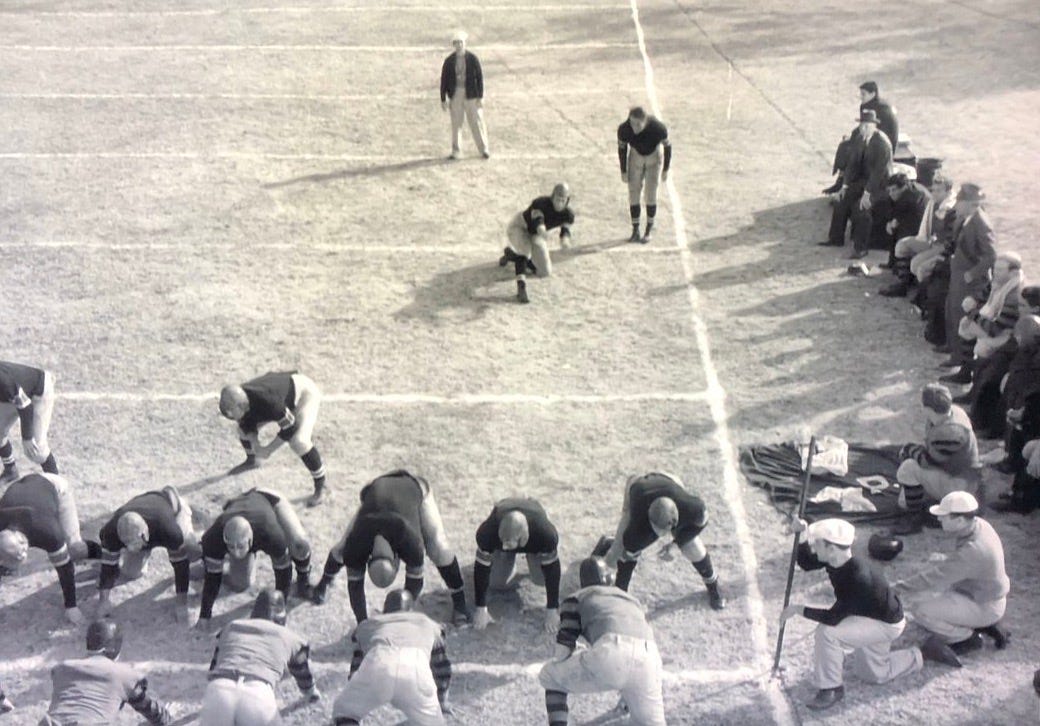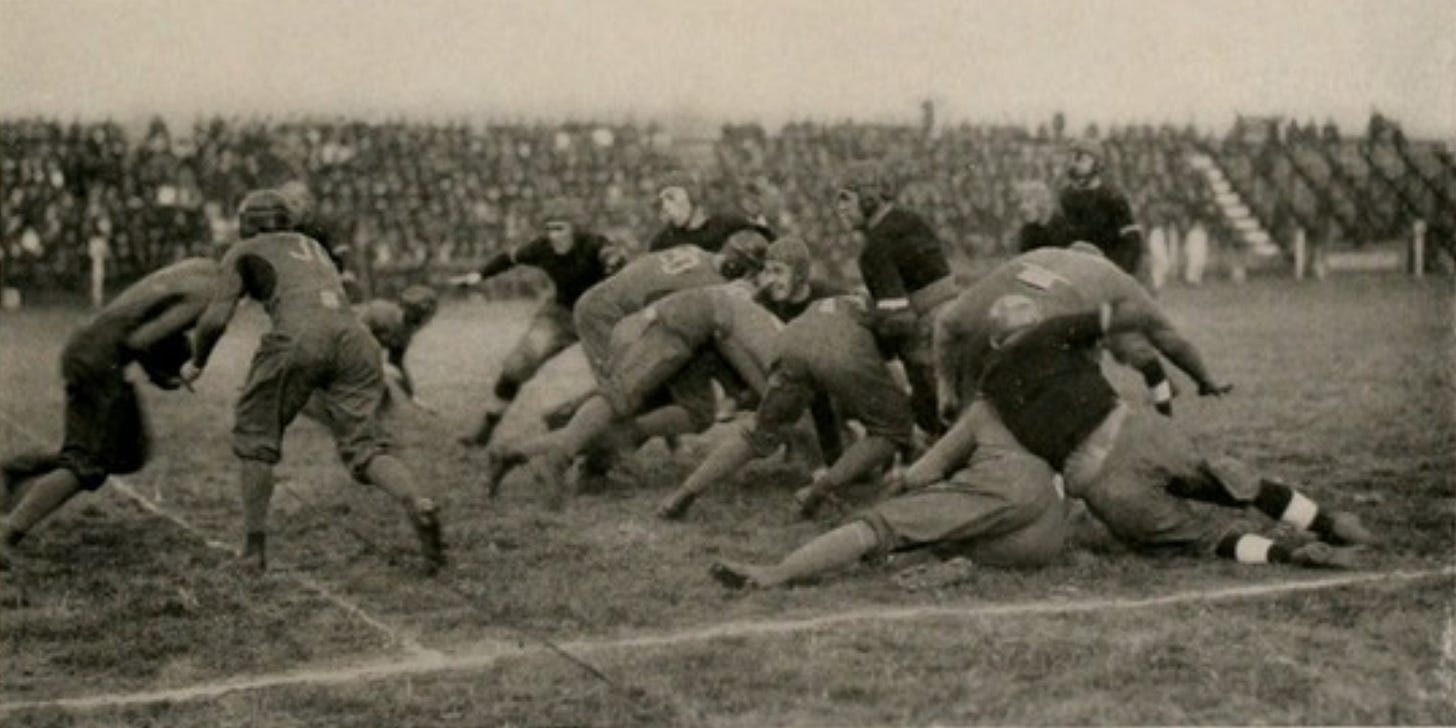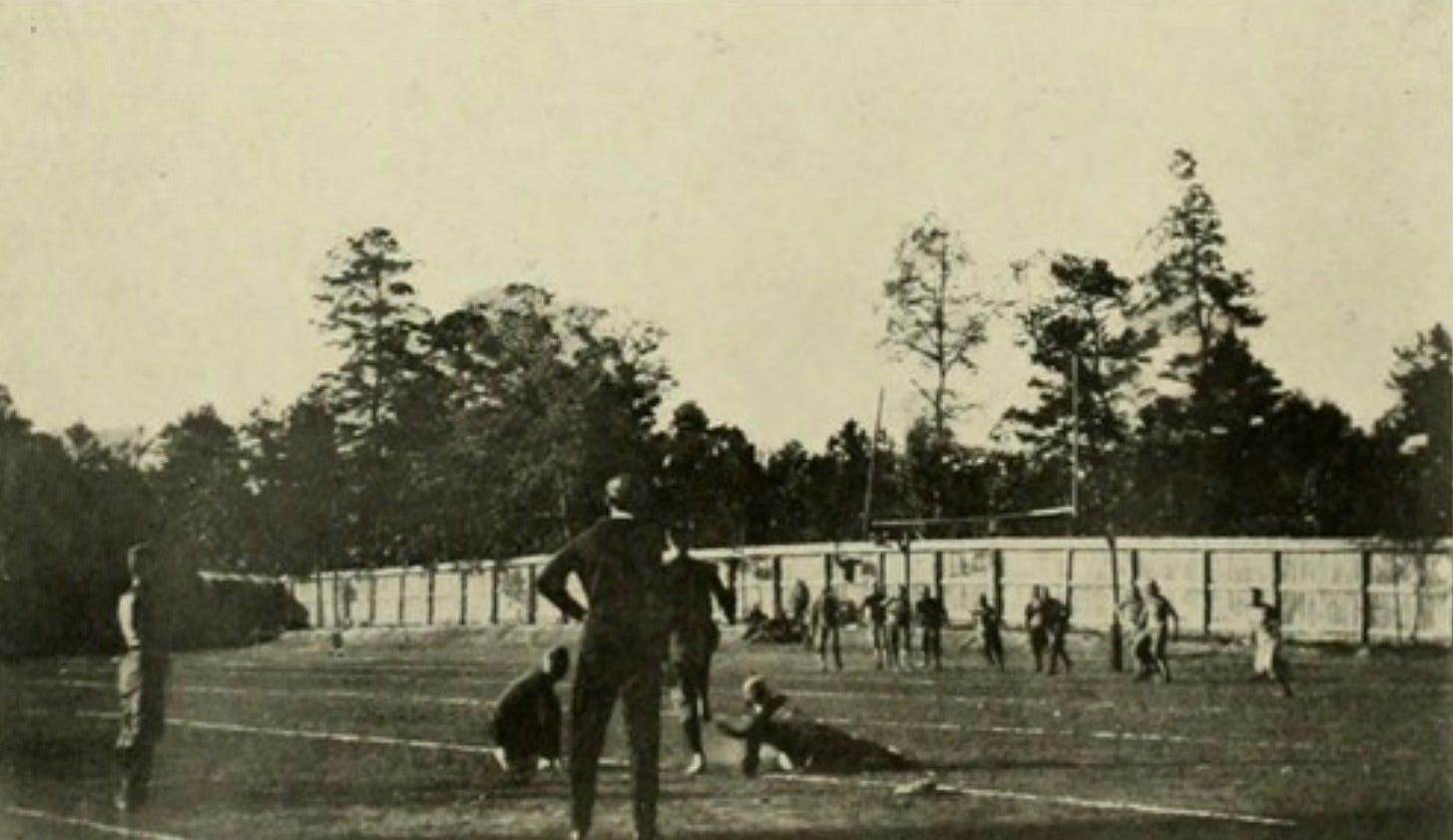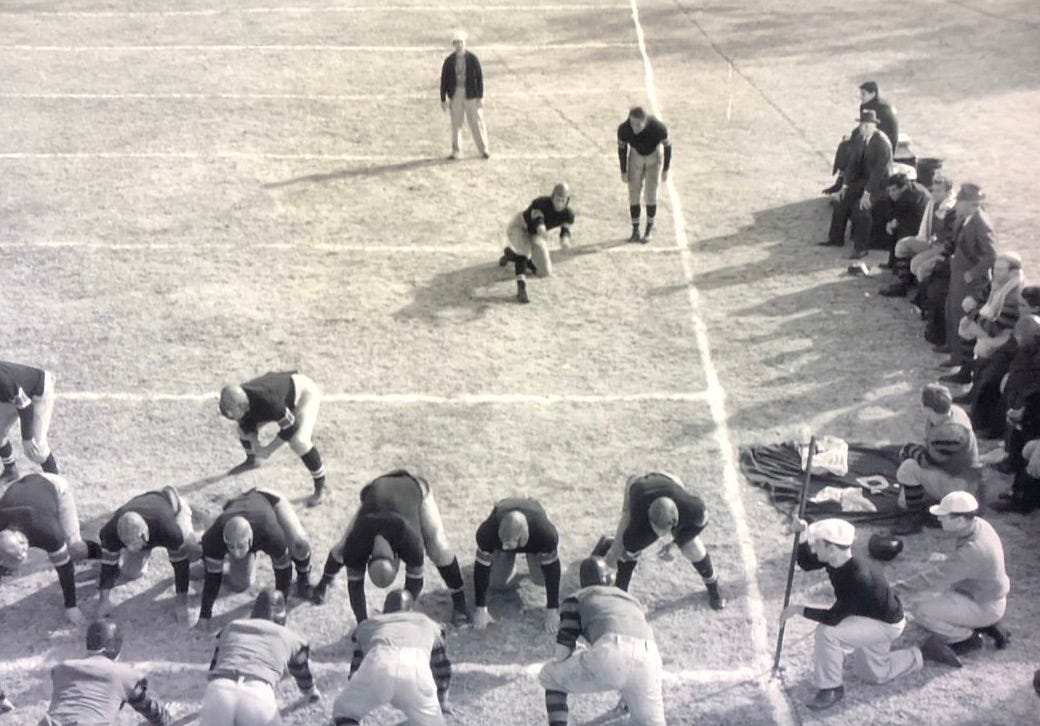Today's Tidbit... Jim Thorpe Kicks from the Sideline
The image above is a great football image despite not being a football image in the strict sense. It is a Hollywood still from Jim Thorpe - All American, so the pictured kicker is Burt Lancaster, not Jim Thorpe.
I like the image because it shows an element of football that disappeared almost ninety years ago with the introduction of hash marks. As noted in the past, until hash marks appeared on the field, scrimmage plays began wherever the previous play ended unless the previous play ended with the ball going out of bounds. In those instances, the next play started 15 yards in from the sideline. However, if the previous play ended with the ball carrier downed near and inside the sideline, the next play started wherever the ball carrier had been downed.
In the past, I've shown numerous images of teams lined up for scrimmage plays along the sideline, and one or two punts or field goal attempts from the sideline area, but none illustrate the challenge of kicking from the sideline and the staged movie image.
As a reminder, here's a sideline play with the ball starting about five yards from the sideline.
Here are images of two punts executed from close to the sideline.
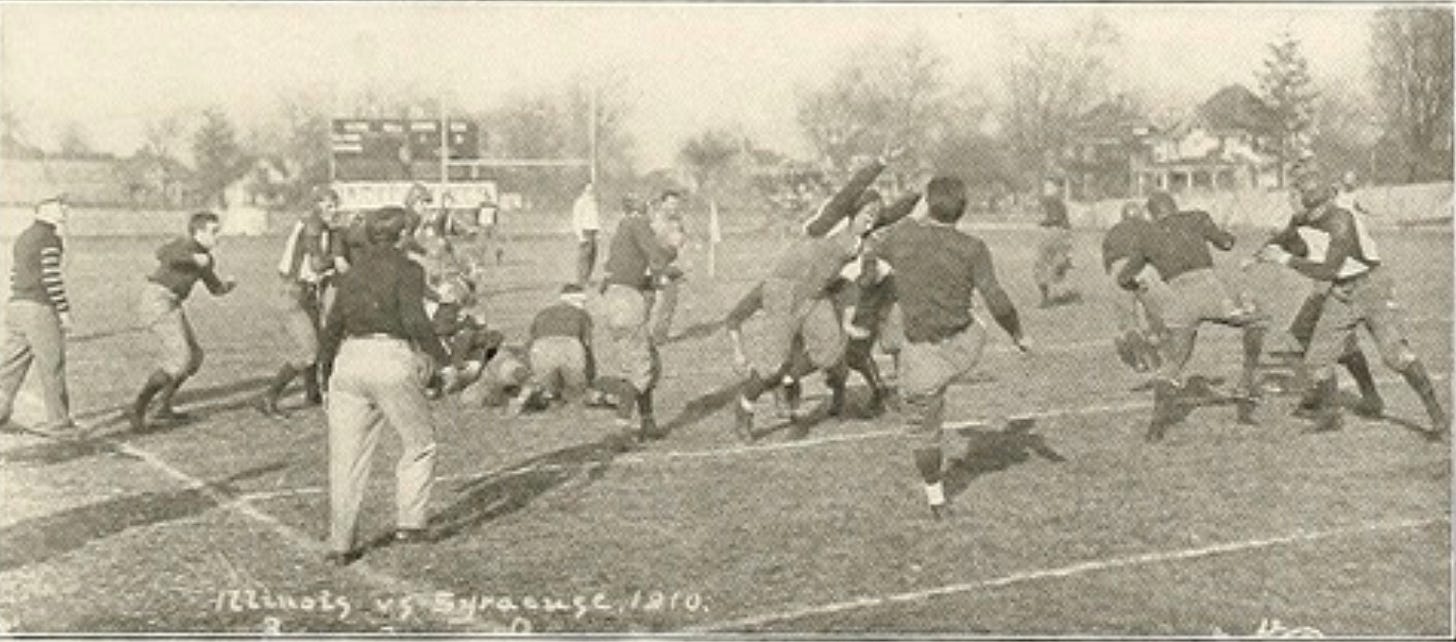
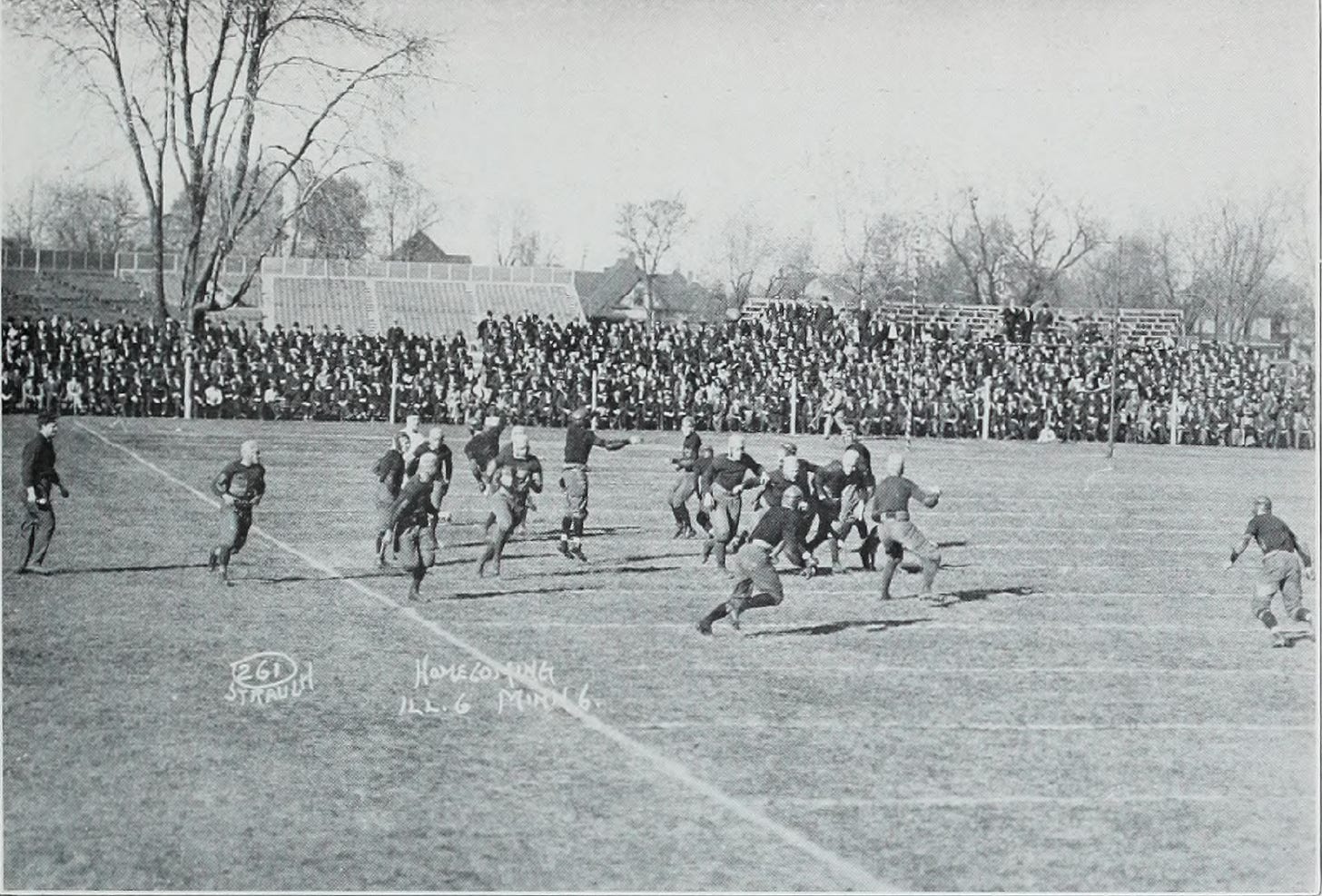
Finally, the only game-action image I have found of a kick executed from near the sideline is below.
Since the defenders stand in the end zone, the above image shows a free kick. At the time, three situations might have led to a free kick from that location. First, all extra point or goal after touchdown attempts were free kicks in the early 1910s, and the kicker could choose to kick from anyone on the field. Since the kicker could kick the ball from the 10-yard line directly in front of the goal, it is unlikely the kicker would choose the location shown in the image.
Second, the kicking team might have fair caught the opponent's punt in that location, giving them a free kick or first down from that spot. However, since the ball is on the 15-yard line, and the offense could run three scrimmage plays to gain a first down or move the ball toward the middle of the field, I'm guessing this was not the case.
Third, and most likely, the kicking team could have executed a puntout, shanked the punt, and fair caught it at the spot shown, at which point they could kick their extra point.
Returning to the Thorpe image, however, the movie storyline tells us Carlisle recovered a Penn fumble at midfield, five or six yards inside the sideline. With only 25 seconds left to play, Thorpe attempted a field goal that would have been the longest field goal ever made, and since it was a scrimmage kick, Penn’s defense could contest the kick. Of course, Hollywood says Thorpe made the kick and tied the game 13-13, despite Penn and Carlisle never playing to a tie during Thorpe’s playing days.
Of course, until someone identifies a real, game-action image of a field goal being attempted from the sideline, the Burt Lancaster version is the best we’ve got.
Football Archaeology is reader-supported. Click here to buy one of my books or otherwise support the site.


